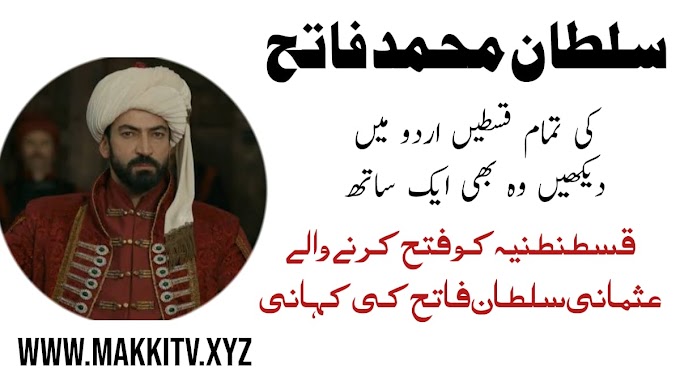The Sun was well past its zenith as a small group of farmers hauled carts full of crops back to the farmstead.
It was a fruitful day and they prayed for the weather to remain dry to aid the rest of the harvest season.
But upon their return, their concerns about weather fell by the wayside, as just in front of the farmstead, hundreds of English and Norman soldiers scrambled, forming defensive lines.
A bit farther, another group of riders in glittering armours were assembling into attack formation. Little did the farmers know of war but it seemed that they were going to witness first-hand a conflict between the greater nobility in front of their very homes.
The battle was about to begin. It is summer of the year 1108. Almost two years have passed since King Henry I of England routed the forces of his older brother Duke Robert Curthose of Normandy near Tinchebray, sentencing him to spend the rest of his days in a prison cell and thus eliminating the most significant threat to Henry’s politic ambitions on both sides of the channel. Certainly, Henry’s popularity and influence rose, as he now held sway over most of the lands once ruled by his renowned father, William the Conqueror. But there was little time to rest on his laurels, as within the next couple of years after Tinchebray, Henry’s carefully cultivated rule faced new problems that sprung up like choking weeds. Although Henry pardoned and reconciled with the Norman lords who sided with his brother in the recent war, including Robert of Bellême, who unexpectedly betrayed Robert at Tinchebray fleeing the battlefield, it soon became increasingly apparent that the Norman opposition to Henry’s overlordship didn’t just cease to exist in the wake of the battle.
Quite the contrary: they eventually united around the young figure of William Clito, the only son of Robert Curthose, which became a major obstacle to Henry’s endeavours to unite Normandy under his rule. Undoubtedly, this was unwelcome news for the English king, but little did he know, that even more serious challenge was rising just across the border. In late July of the year 1108 the King of the Franks, Philip the Amorous, drew his final breath and days later his son Louis was crowned in Paris as the fifth consecutive king of House Capet. It’s good to keep in mind, that this change on the Frankish throne, in and of itself, wasn’t really a game-changing event, as in the early 12th century Frankish Kings were in fact able to exert direct rule over little more than a modest patch of land around the capital.
For the rest of their kingdom, they were just nominal overlords, while the true power was held by various local dukes and counts. But the twenty something King Louis, bearing the telling nickname, “the Fighter” had soon emerged as a competent ruler, possessing many of the necessary traits to take on the mission of expanding royal authority over his virtually independent vassals. This was unfortunate news for King Henry, as he formally became Louis’ liegeman in Normandy. What’s even more unfortunate is that Louis soon made first attempts to undermine the authority the English King held over the duchy and thus bringing Normandy closer to the monarchy in Paris. Of course, Henry was unwilling to yield his continental possessions just because he was asked to do so, and in early 1109 both kings gathered their forces and met at the border to settle their issues. Louis decided to measure his steps carefully and demanded that the border strongholds guarding the main road from Paris to Rouen should either have neutral garrisons or else be dismantled. Henry refused to give up these castles and was thus challenged by Louis to resolve the issue by single combat, a proposal he also promptly refused. Although the armed deadlock was eventually resolved via a truce, and no fighting occurred, both Kings were mindful that it was just the first move in a conflict that would drag on until the end of the next decade. In the years that followed, Henry’s actions to solidify his position and undermine Louis’ brought mixed results. On the one hand he managed to seal an alliance with Brittany and claimed his overlordship in Maine, even compelling the French King to recognize these achievements. But on the other hand, he failed to secure the issue of succession and have his only son, William Adelin recognized as an heir to the Duchy of Normandy. Initially, King Louis seemed to be sympathetic to this idea, but in the end, with the support of Count Baldwin of Flanders he declared William Clito, the only son of imprisoned Robert Curthose as legitimate heir to the duchy. This event obviously was a significant slight for Henry, and one of the reasons that drew him substantial opposition in Normandy in subsequent years. An open war broke out and both Louis and Henry raided their respective towns along the borderlands. The English King was quickly compelled to take more defensive stance, as by 1118 he had two more powerful nobles turn against him: Baldwin of Flanders, whose court was a refuge to young William Clito, Henry’s rebellious nephew, and ambitious Fulk of Anjou, who defeated Henry’s troops near the city of Alençon. Moreover, some of the Norman barons, seeing that Henry’s position had noticeably deteriorated, began openly questioning his competence. Undeniably, it was a rough time for the English King, who became so invested in local politics, that he didn’t even sail back to England to attend the funeral of his wife, when she died in May 1118. Instead, Henry launched a number of campaigns to bring the disobedient Norman barons back to royal heel. He also had a much needed stroke of luck, as one of his chief rivals Baldwin of Flanders died of wounds in the summer of the 1118, easing Henry’s situation for some time. In late spring of the next year, Henry made another significant step to improve his position by marrying his only legitimate son, William Adelin, to the daughter of Fulk of Anjou in exchange for an exorbitant amount of money. What’s more, Fulk soon departed for the Holy Land, leaving the County of Maine under Henry’s control. As a result, in the span of less than a year, the English King regained the initiative and was able to concentrate his efforts on the fight against King Louis of France. In August of 1119, Henry assembled a force of 500 knights and departed Rouen to raid the French settlements on the borderlands. It was rather a wonted mission, but on August the 20th unexpected news reached Henry’s camp. Norman scouts reported a small village being set a blaze by a number of French horsemen. Further scouting parties were sent to investigate and it soon became apparent, that King Louis was also operating in the same general area with his own armed contingent. Henry moved his force to seek a good place to make a stand, but when fresh news came in that the French were very close, he decided to wait for Louis near the stockaded farmstead of Brémule lying close to the old Roman road with dense forests nearby. The French King was willing to resolve the mutual issues with his Anglo-Norman counterpart and, upon learning of his opponent’s position, rode to meet him. King Louis led a force of around 400 knights, squires and men-at-arms, among them, seventeen year old William Clito - heir to Robert Curthose. Their force was split into three, roughly equal divisions of horsemen, with the king commanding the rear detachment. Further down the road, King Henry was preparing his own men for an upcoming encounter. Less than a quarter of the Anglo-Norman fighting force formed the mounted vanguard, while the rest of Henry’s knights were ordered to dismount and form a wide, but tight defensive line, stretching between the farmstead and the forest. This was to make any flanking manoeuvres by the French, all but impossible. Henry’s order may have seemed strange, especially for Louis, but the English King had already made use of this tactic thirteen years earlier, when his footed knights were able to withstand the relentless charge of the heavy cavalry of Robert Curthose. Now, Henry had both the French King and Robert’s son in another battle that was about to ensue. Waiting no longer, Louis commanded the first line of his riders to charge. The short sound of a horn echoed as French cavalry lined up to attack. On the other end, Henry’s mounted vanguard did the same and soon the two sides clashed in the first encounter. From the distance, neither commander could tell which units were winning, but it became clear in but a moment. Norman cavalrymen, having lost the bout began a coordinated retreat. The French riders, encouraged by their initial success, regrouped and charged at the dismounted Norman knights. But Henry’s men endured the furious assault and unhorsed many of the French, capturing dozens and routing the rest. Seeing the first attack fail to break the Anglo-Norman line, Louis sent forth the second line of riders, well-trained retinues of various French feudal lords. In the meantime, Henry’s mounted unit managed to regroup and one more time attempted to stop the French charge. Once again the clamour of shattered lances and horses braying reached the remainder of both armies, but this time Henry’s riders were completely shattered by the French and fled in disarray. Louis’ cavalrymen then reformed and launched a daring attack on the tightly packed line of Anglo-Norman pikes. The second attack was visibly stronger, but Henry’s personal command and the fierceness of his soldiers allowed them to endure the storm and gradually gain an upper hand. The impact of the French attack quickly waned and upon losing dozens of men, they were forced to retreat. The sight of his own men riding back badly beaten must have been disheartening for Louis who, seeing that roughly a third of his contingent was either killed or captured, hesitated to risk the remaining division in another attack and eventually, commanded a retreat, leaving the English king victorious on the battlefield. Many Anglo-Norman knights remounted and pursued the enemy, but no further casualties followed. Though sources state rather insignificant number for the losses on both sides, Henry managed to capture around 140 French knights, among them many important nobles, who were later freed after having to pay a hefty ransom. But this was only a side effect of the battle. More importantly, the victory at Brémule positioned Henry favourably against the French king. Although it took several months and required papal mediation, Louis agreed to make peace with Henry and formally recognized William Adelin as the heir of Duchy of Normandy. Eventually, after nearly twenty years of struggle, Henry Beauclerc not only managed to gain a solid grip of Normandy, but more importantly was no longer haunted by the spectre of the duchy’s undecided succession. Upon his death, his son William Adelin was to become the formal and true overlord of both the Kingdom of England and the Duchy of Normandy. But little did Henry know that, just a few months later, his hard-won successes would all but be shattered upon the treacherous rocks of the Norman shore.













0 Comments
Thanks For Makki Tv Website Visit Please Contect My Whatsapp Number For Updates 03155017246